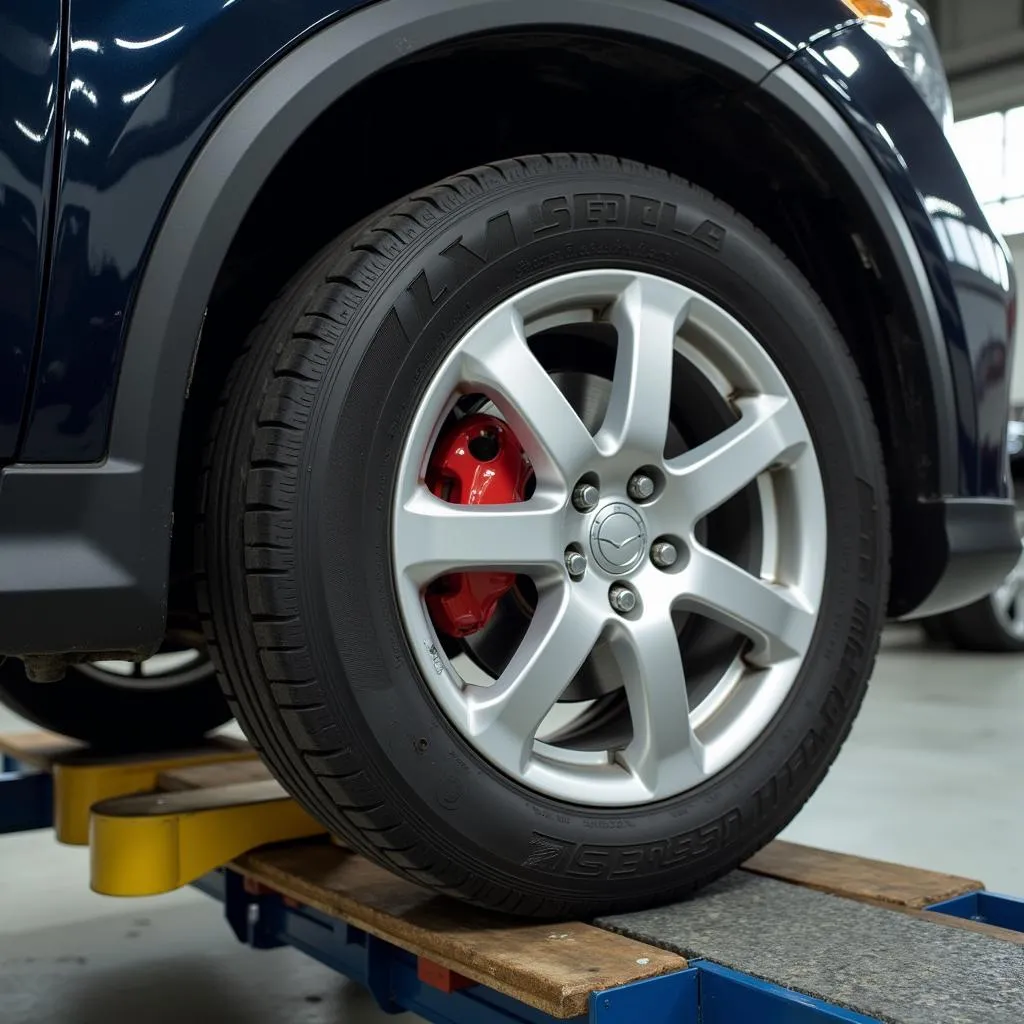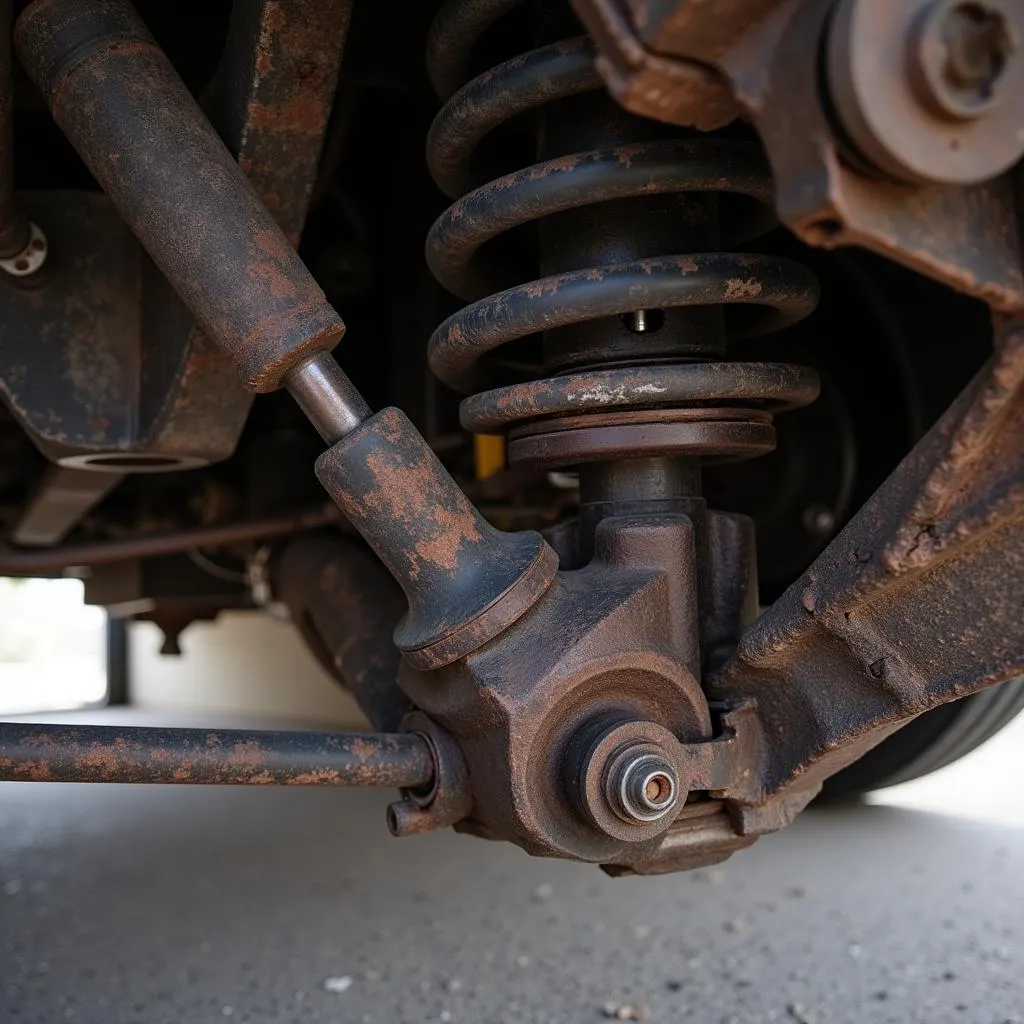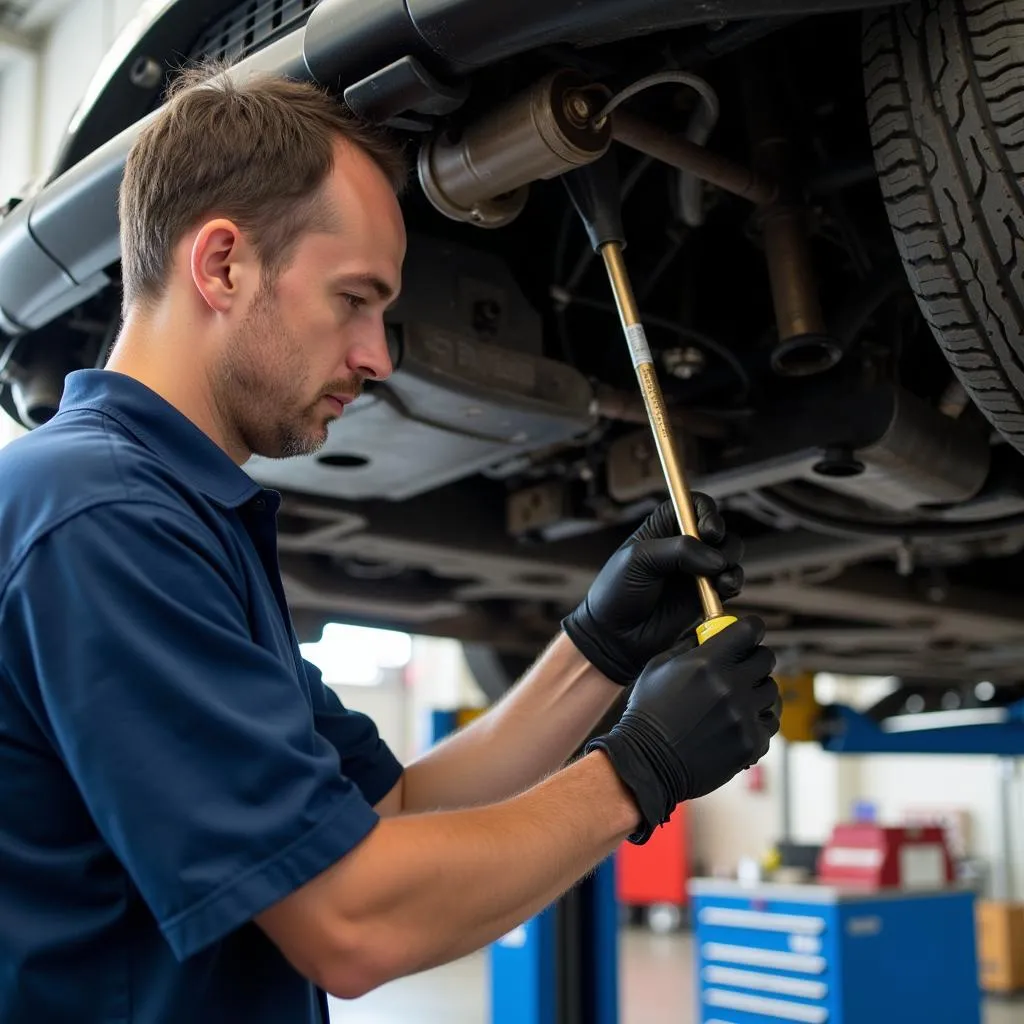Experiencing a wobbly feeling while driving can be unsettling and potentially dangerous. This unsettling sensation often manifests as a swaying or shaking, particularly at higher speeds, and can be a telltale sign of several underlying issues with your car. This article delves into the common causes behind a car feeling wobbly while driving, helping you identify the culprit and take appropriate action.
Why Does My Car Wobble When Driving?
A wobbly car is often a symptom of problems related to your vehicle’s tires, wheels, steering, suspension, or alignment.
1. Tire Issues
Tires play a crucial role in your car’s stability and handling. Here’s how they can contribute to a wobbly ride:
-
Uneven Tire Wear: Uneven wear patterns, such as cupping or feathering, can indicate suspension problems or improper inflation, leading to a bumpy and wobbly ride.
-
Tire Pressure Imbalance: Incorrect tire pressure, whether overinflation or underinflation, can affect the tire’s contact patch with the road, causing instability, especially at higher speeds.
-
Damaged Tires: Bulges, bubbles, or cracks in your tires, often caused by impacts with potholes or curbs, compromise the tire’s structural integrity and lead to a wobbly sensation.
-
Unbalanced Tires: When tires aren’t balanced properly, they can cause vibrations that worsen at higher speeds, making the car feel wobbly and difficult to control.
 Unbalanced Car Tire
Unbalanced Car Tire
2. Wheel Problems
Issues with your wheels can also contribute to that unsettling wobbly feeling:
-
Bent Wheel: Hitting a pothole at high speed or driving over a curb can bend a wheel, affecting its balance and resulting in vibrations and a wobbly sensation.
-
Loose Lug Nuts: If the lug nuts that secure your wheels to the car are loose or improperly torqued, the wheel can wobble, leading to a noticeable vibration and instability.
3. Steering and Suspension Components
Your car’s steering and suspension systems work in tandem to ensure a smooth and controlled ride. Problems within these systems can manifest as a wobbly feeling:
-
Worn Suspension Components: Components like shocks, struts, control arms, and ball joints wear down over time. This wear can cause excessive movement and instability, particularly noticeable over bumps and at higher speeds.
-
Steering Linkage Issues: Worn tie rod ends or other damaged components in the steering linkage can cause looseness in the steering, making the car feel wobbly and difficult to control.
 Worn Out Car Suspension
Worn Out Car Suspension
4. Wheel Alignment
Proper wheel alignment ensures that your wheels are pointing in the correct direction and are parallel to each other. Misalignment can cause the car to pull to one side and create uneven tire wear, contributing to a wobbly feeling.
What to Do if Your Car Feels Wobbly When Driving
If your car feels wobbly while driving, it’s essential to address the issue promptly. Here’s what you should do:
-
Check Tire Pressure: Use a tire pressure gauge to ensure your tires are inflated to the recommended PSI, which is usually found on a sticker inside the driver’s side door jamb.
-
Inspect Tires: Carefully examine your tires for signs of damage like bulges, bubbles, cracks, or uneven wear patterns. Replace damaged tires immediately.
-
Check Lug Nuts: Ensure all lug nuts are securely tightened.
-
Visit a Mechanic: If the problem persists, schedule an appointment with a trusted mechanic. They can diagnose the issue accurately using professional equipment like a car lift and diagnostic tools.
When i turn the key nothing happens no click: Related Issues
A wobbly car might be accompanied by other problems, such as:
-
[When i turn the key nothing happens no click](https://diagxcar.com/when-i-turn-the key-nothing-happens-no-click/): While seemingly unrelated, this electrical issue could point to a bigger problem that might also be affecting your car’s stability.
-
Vibrations in the Steering Wheel: Vibrations, particularly at specific speeds, could indicate unbalanced tires or a problem with your wheels or suspension.
-
Pulling to One Side: If your car drifts to one side while driving, it could be a sign of misalignment, a tire pressure imbalance, or a problem with your braking system.
 Mechanic Inspecting Car Suspension
Mechanic Inspecting Car Suspension
Conclusion
Addressing a wobbly car promptly ensures your safety and prevents further damage to your vehicle. While some causes like tire pressure imbalances are simple to fix, others require the expertise of a qualified mechanic. Regular car maintenance, including tire rotations, wheel alignments, and inspections of steering and suspension components, can help prevent many of these issues from arising in the first place. Remember, your safety on the road is paramount, and a well-maintained car is a safer car.
FAQs
1. Can a bad alignment cause my car to wobble?
Yes, misaligned wheels can cause uneven tire wear, leading to a wobbly sensation, especially at higher speeds.
2. How often should I get my tires rotated?
It’s generally recommended to rotate your tires every 5,000 to 8,000 miles to promote even wear.
3. Can I drive with a wobbly car?
It’s best to avoid driving a car that feels wobbly, especially at higher speeds, as it poses a safety risk. Have the issue diagnosed and repaired as soon as possible.
4. How do I know if my tires need balancing?
Signs of unbalanced tires include vibrations in the steering wheel or the entire car, especially at higher speeds.
5. Is it expensive to fix a wobbly car?
The cost of repair varies depending on the underlying cause. Simple fixes like tire pressure adjustments or wheel balancing are relatively inexpensive, while more complex issues like suspension repairs can be more costly.
Need More Help?
Experiencing other car problems? We’re here to assist you!
- Nothing happens when i turn my car key
- Car not turning over no clicking
- Car wont turn over
- Engine turning over but not starting
Contact us for expert advice and solutions:
- WhatsApp: +1(641)206-8880
- Email: cardiagtechworkshop@gmail.com
- Address: 276 Reock St, City of Orange, NJ 07050, United States
Our dedicated customer support team is available 24/7 to assist you.